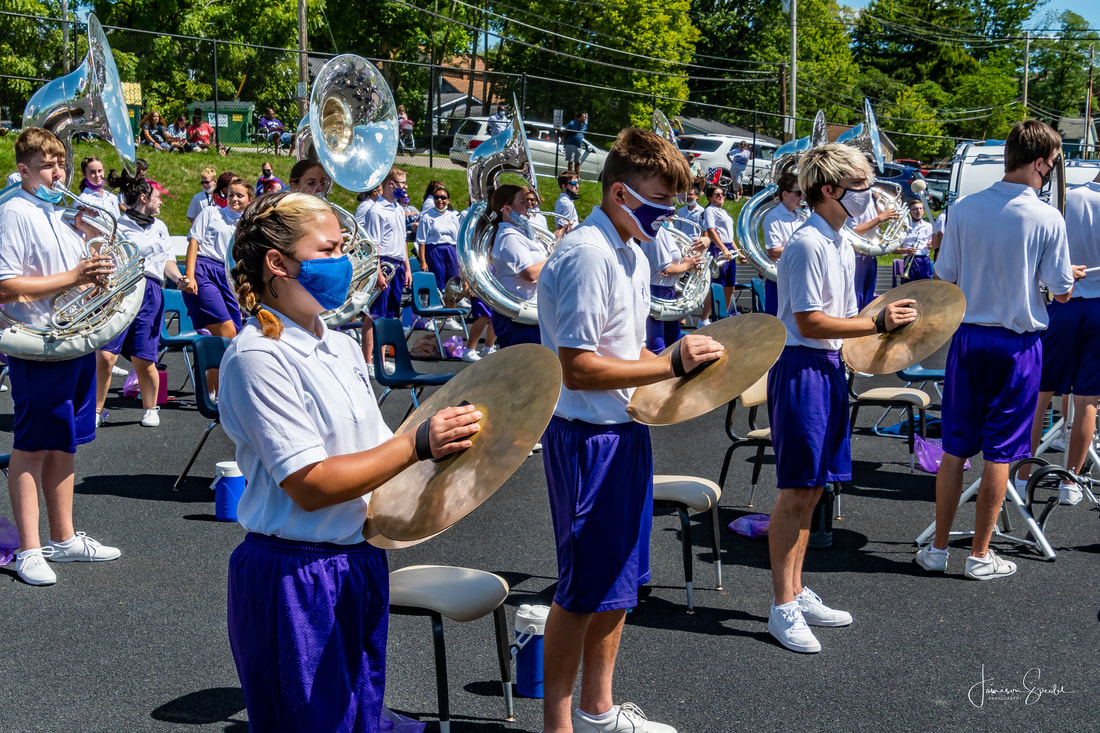PHSC MARCHING TIGERS
Battery Information - Cymbals
Marching cymbals are typically pairs of crash cymbals ranging anywhere from 16 to 22 inches in diameter (which are commonly used, though other sizes are also utilized) and are played in a variety of ways. Cymbals are usually bronze and most often held with leather carrying straps. Players in a cymbal line may all carry the same size and type of cymbal, or a variety of instruments may be used. It is not uncommon, however, for each player in a cymbal line to have a different sized pair of cymbals than their peers because it is an efficient way to carry out different sounds and tones depending on what the music and/or percussion director calls for.
Cymbal players usually play cymbals by holding and striking them together in front the body, in unison or in split parts. Snare drummers may use them to reproduce a kit sounding part. In addition to being played by the cymbal player, snare drummers may play on the cymbals as ride cymbals or like hi-hats. Cymbals are also used for visual effects due to their reflectiveness while twirling or spinning them. Some tricks include creating letters or shapes and even the "viper," a move in which a center cymbal player jumps and ducks as two cymbal players on each side swing cymbals above and below the jump. Many contemporary field ensembles do not utilize a cymbal line, instead having cymbals played within the front ensemble.
Cymbal players usually play cymbals by holding and striking them together in front the body, in unison or in split parts. Snare drummers may use them to reproduce a kit sounding part. In addition to being played by the cymbal player, snare drummers may play on the cymbals as ride cymbals or like hi-hats. Cymbals are also used for visual effects due to their reflectiveness while twirling or spinning them. Some tricks include creating letters or shapes and even the "viper," a move in which a center cymbal player jumps and ducks as two cymbal players on each side swing cymbals above and below the jump. Many contemporary field ensembles do not utilize a cymbal line, instead having cymbals played within the front ensemble.

